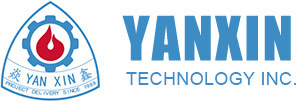Industrial requirements for heating furnaces
Source:Jiangsu Yanxin Science & Technology Inc. Release time:2022-05-20 10:56:49 Author:520


Industrial requirements for heating furnaces
1. High productivity Under the premise of ensuring quality, the faster the heating speed of the material, the better, which can improve the productivity of the heating furnace and reduce the number of furnace seats or small furnace size. Rapid heating can also reduce metal burn loss and specific fuel consumption, saving maintenance costs. Generally, the unit productivity, that is, the furnace bottom strength kg/(m2Xh), is used to evaluate the working advantages of a furnace. For example, the furnace bottom strength of the push-steel continuous heating furnace is 600-800kg/(m2Xh), the walking furnace is 700-900kg/(m2Xh), and the advanced continuous heating furnace can reach 1000kg/(m2Xh).
2. Good heating quality The rolling quality of the metal is closely related to the heating quality of the metal. When heating, the material's discharge temperature should meet the process requirements, the temperature distribution on the section is uniform, and the metal burning loss rate is low to prevent overburning and decarburization of the surface.
3. Low fuel consumption 10%-15% of the energy consumption of the rolling mill is used in the heating furnace, saving fuel is of great significance to reducing costs and saving energy. Generally, the unit fuel consumption is used to evaluate the work of the furnace, such as the amount of fuel consumed by 1kg of steel in kg or the amount of heat in kj.
4. The furnace has a long service life. Due to high temperature and mechanical wear, the furnace will inevitably be damaged and must be regularly repaired. The service life of the furnace should be extended as much as possible and the cost of repairing the furnace should be reduced.
5. Good working conditions require a high degree of mechanization of the furnace, good operating conditions, safety and hygiene, and no pollution to the environment.
The above five aspects are the general requirements for heating furnaces. When dealing with specific furnaces, the relationship between various indicators should be viewed dialectically. For example, improving productivity, improving heating quality and reducing fuel consumption are generally unified, but sometimes There is a master and a second. For example, some heating furnaces have emphasized higher productivity in the past, but at any time when energy problems become prominent, more focus on energy saving, and appropriately reduce the heat load and productivity of the furnace.



